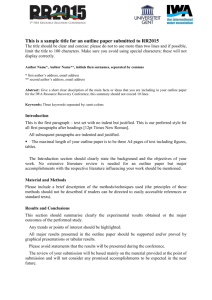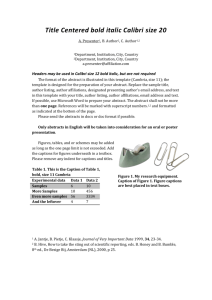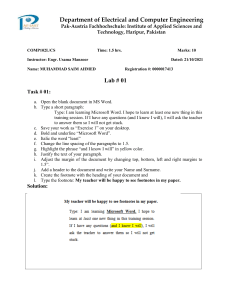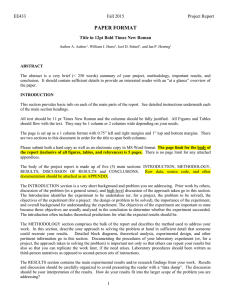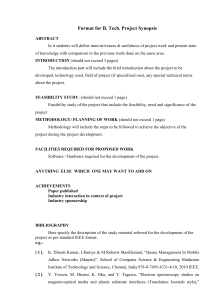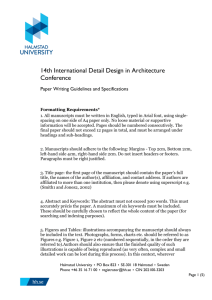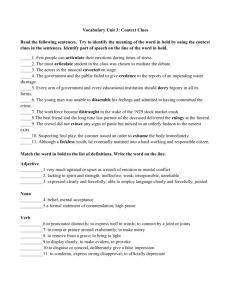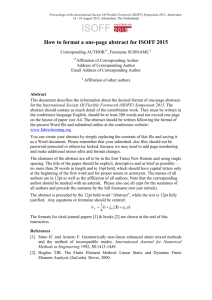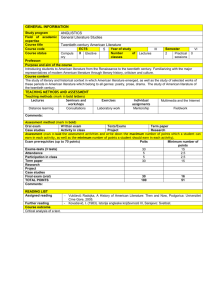Template
advertisement
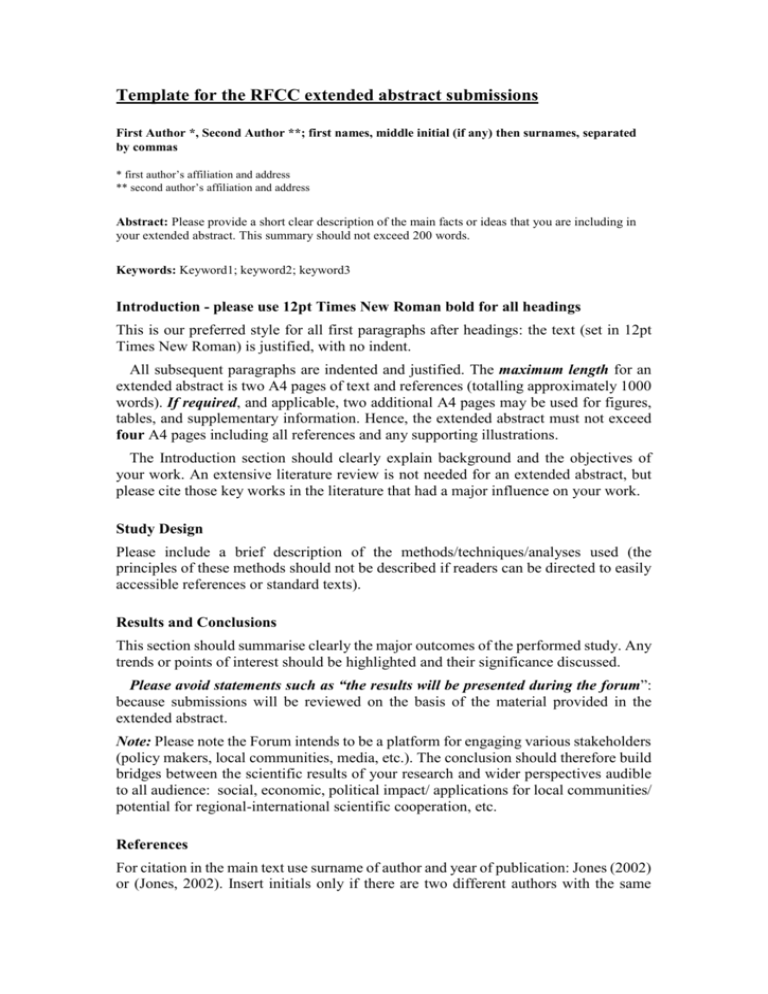
Template for the RFCC extended abstract submissions First Author *, Second Author **; first names, middle initial (if any) then surnames, separated by commas * first author’s affiliation and address ** second author’s affiliation and address Abstract: Please provide a short clear description of the main facts or ideas that you are including in your extended abstract. This summary should not exceed 200 words. Keywords: Keyword1; keyword2; keyword3 Introduction - please use 12pt Times New Roman bold for all headings This is our preferred style for all first paragraphs after headings: the text (set in 12pt Times New Roman) is justified, with no indent. All subsequent paragraphs are indented and justified. The maximum length for an extended abstract is two A4 pages of text and references (totalling approximately 1000 words). If required, and applicable, two additional A4 pages may be used for figures, tables, and supplementary information. Hence, the extended abstract must not exceed four A4 pages including all references and any supporting illustrations. The Introduction section should clearly explain background and the objectives of your work. An extensive literature review is not needed for an extended abstract, but please cite those key works in the literature that had a major influence on your work. Study Design Please include a brief description of the methods/techniques/analyses used (the principles of these methods should not be described if readers can be directed to easily accessible references or standard texts). Results and Conclusions This section should summarise clearly the major outcomes of the performed study. Any trends or points of interest should be highlighted and their significance discussed. Please avoid statements such as “the results will be presented during the forum”: because submissions will be reviewed on the basis of the material provided in the extended abstract. Note: Please note the Forum intends to be a platform for engaging various stakeholders (policy makers, local communities, media, etc.). The conclusion should therefore build bridges between the scientific results of your research and wider perspectives audible to all audience: social, economic, political impact/ applications for local communities/ potential for regional-international scientific cooperation, etc. References For citation in the main text use surname of author and year of publication: Jones (2002) or (Jones, 2002). Insert initials only if there are two different authors with the same surname and same year of publication. The abbreviation "et al." should be used in the text when there are more than two co-authors of a cited paper. References should be listed alphabetically at the end of the outline paper. Although "et al." is preferable in the text, in the list of references all authors should be given. Andrews, J. F. (1993), Modeling and simulation of wastewater treatment processes. Wat. Sci. Tech., 28(11/12), 141–150. Billing, A. E. (1987), Modelling techniques for biological systems. M.Sc. thesis, Dept Chem. Eng., Univ. of Cape Town, Rondebosch 7700, South Africa. Billing, A.E. and Dold, P.L. (1988a), Modelling techniques for biological reaction systems. 1. Mathematic description and model representation. Wat. SA, 14(4), 185–192. Figures and Tables If you wish to present your results in a tabular form or by using graphical presentations please use the following formats for tables and figures. Figures and tables should appear in numerical order, be described in the body of the text and be positioned close to where they are first cited. Make sure all figures and tables will fit inside the text area. Please ensure that all figures are clearly labelled and easily readable in black-and-white printing. Table 1 This is a style for table captions. “Table 1, 2…” should be in bold. Table captions should appear above tables. Please include your table here. Please include your figure here. Figure 1 This is a style for Figure legends. “Figure 1, 2…” should be in bold. Figure legends should appear below figures.
